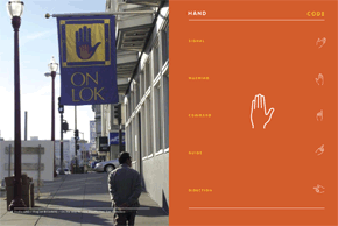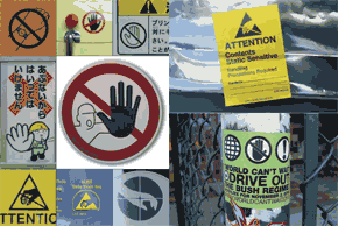   
Handbook:
A book of hands
What is the common point between a Polish phone company
and a gloves store in Basel ? The link between a californian
spa and a jewelery store in Swiss-Germany ? The connection
between a subway station in Berlin and a vendor machine
in Arizona. The packaging of a Swiss TV-diner with a bag of
Japanese snack ? The found objects office in a Swiss
railway station and the international airport in Frankfurt ?
With the text of 2 californian visual specialists – Aaron Marcus and Erik Adigard – it demonstrates the differences between signs and codes, symbols and icons, motion and gestures, interpretations and styles. Observing the issues of contemporary communication, it is a visual analyze with global aspirations. It is a reflection about the growing tendencies of non-verbal expressions in the world and is addressed to a global audience interested in graphic languages, environmental communication and transcultural information design. Originally started in Switzerland it refers to different locations, products or visual information sources in the world, San Francisco / Phoenix / Los Angeles / Basel / Lausanne / Bern / Berlin / Paris / Helsinky / Madrid and many other locations visited by foot, by bike, car, bus, subway, railroad, boat or by plane, this book is a visual reflection on information design related to a global theme. More and more actual ways of communication are going over the borders and move toward more global ways and more complex interfaces of exchanging messages. Hand-signs are present in our daily visual landscape. They help us to direct our activities and actions, they are accompanying us in our daily decisions. Even if we all perceive life in some different way, we have something in common. Each of us enters regularly in contact with those modern hieroglyphs. Those pictograms are a global language. They are understandable by anyone independently from our mother tongue. |


